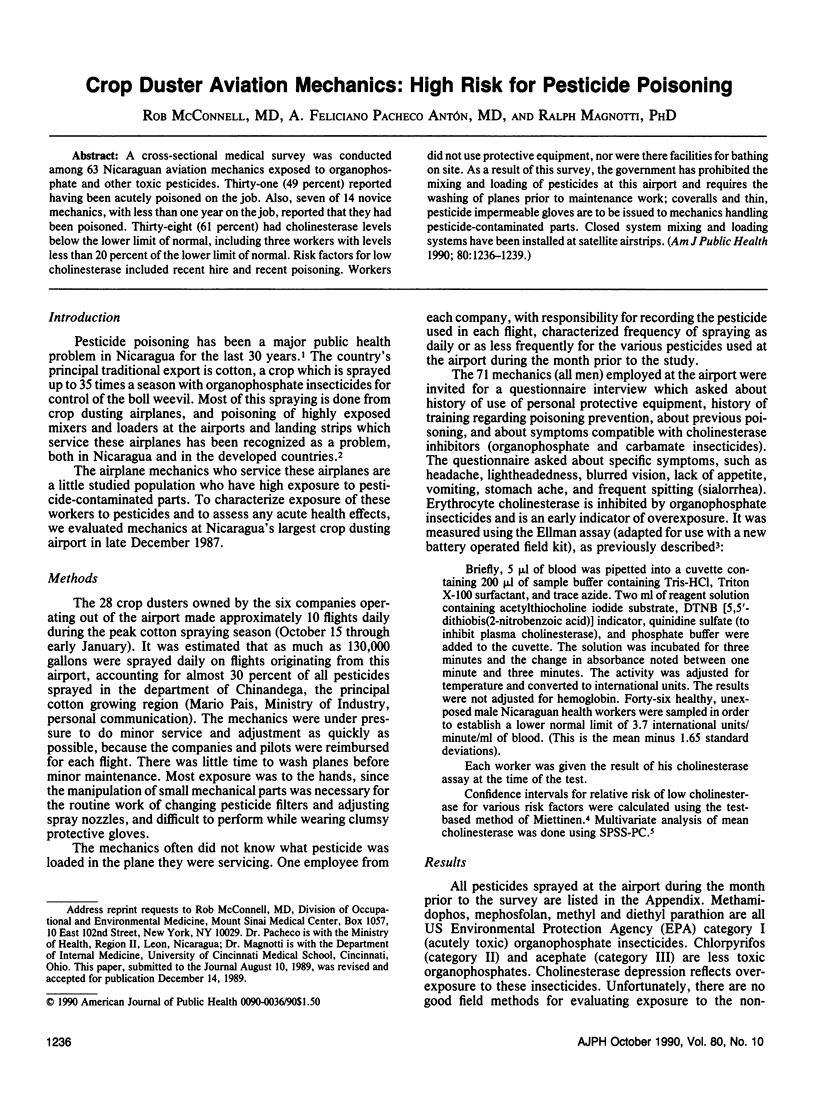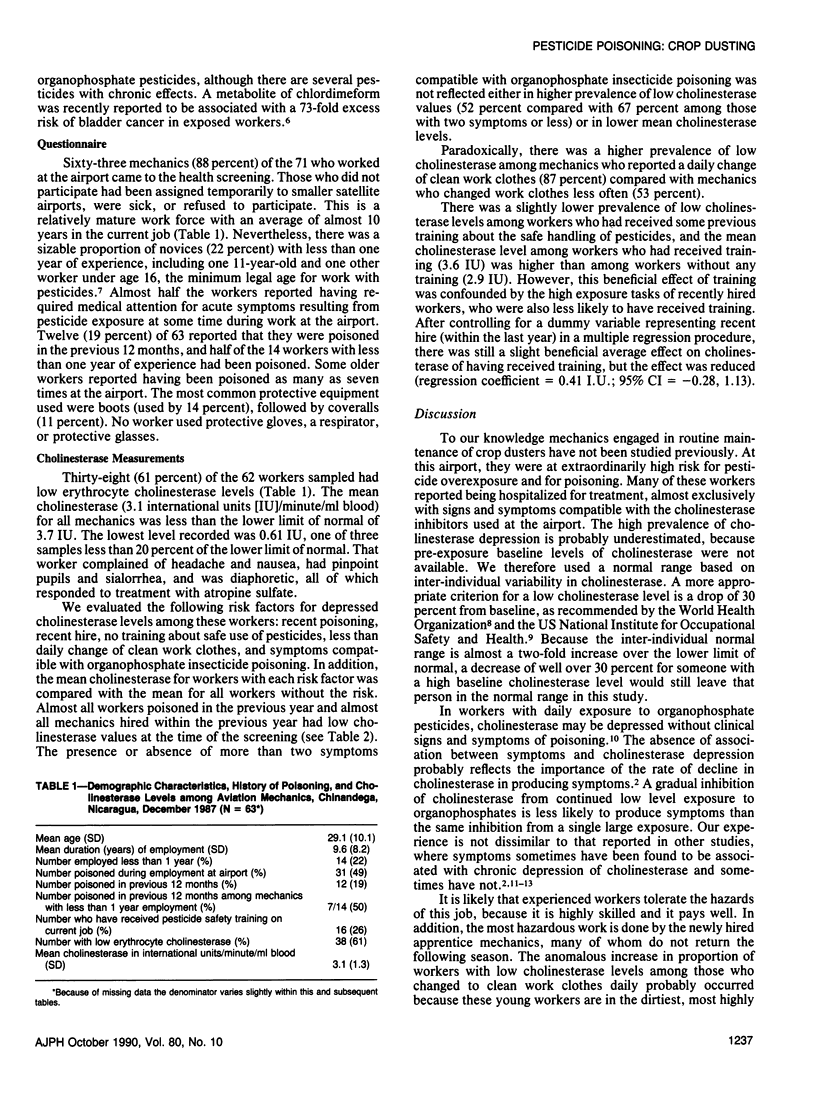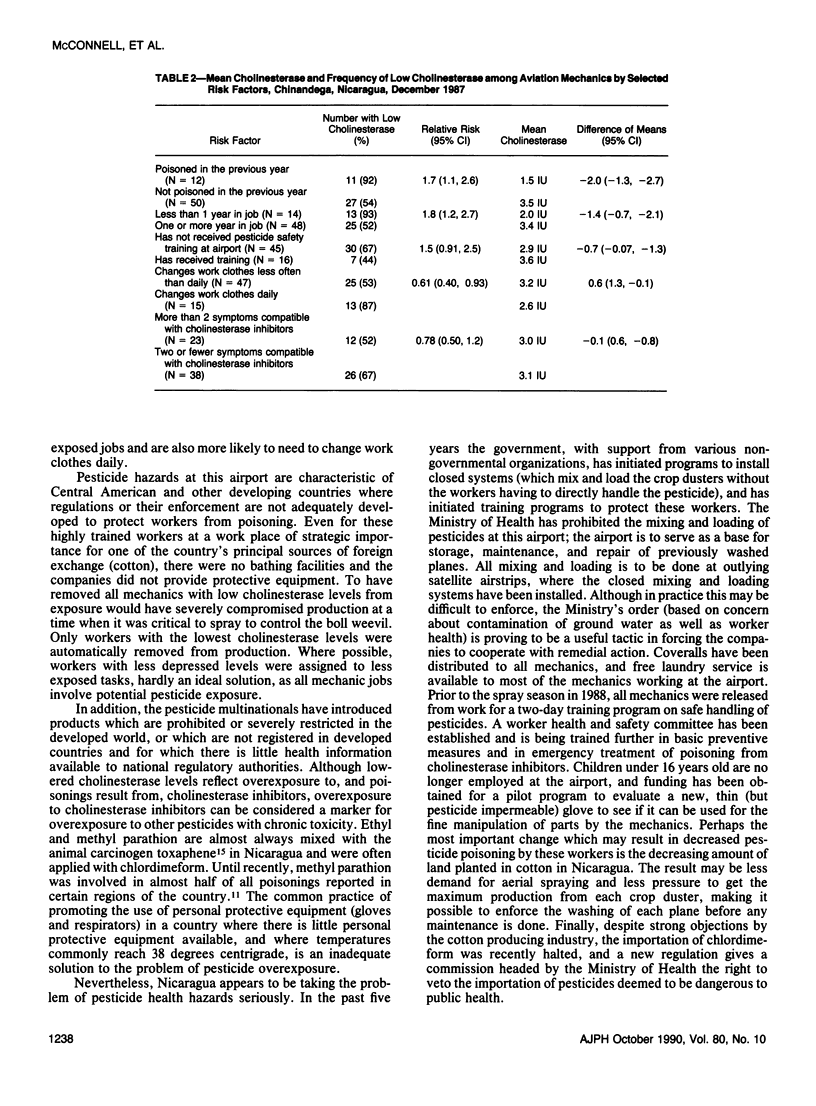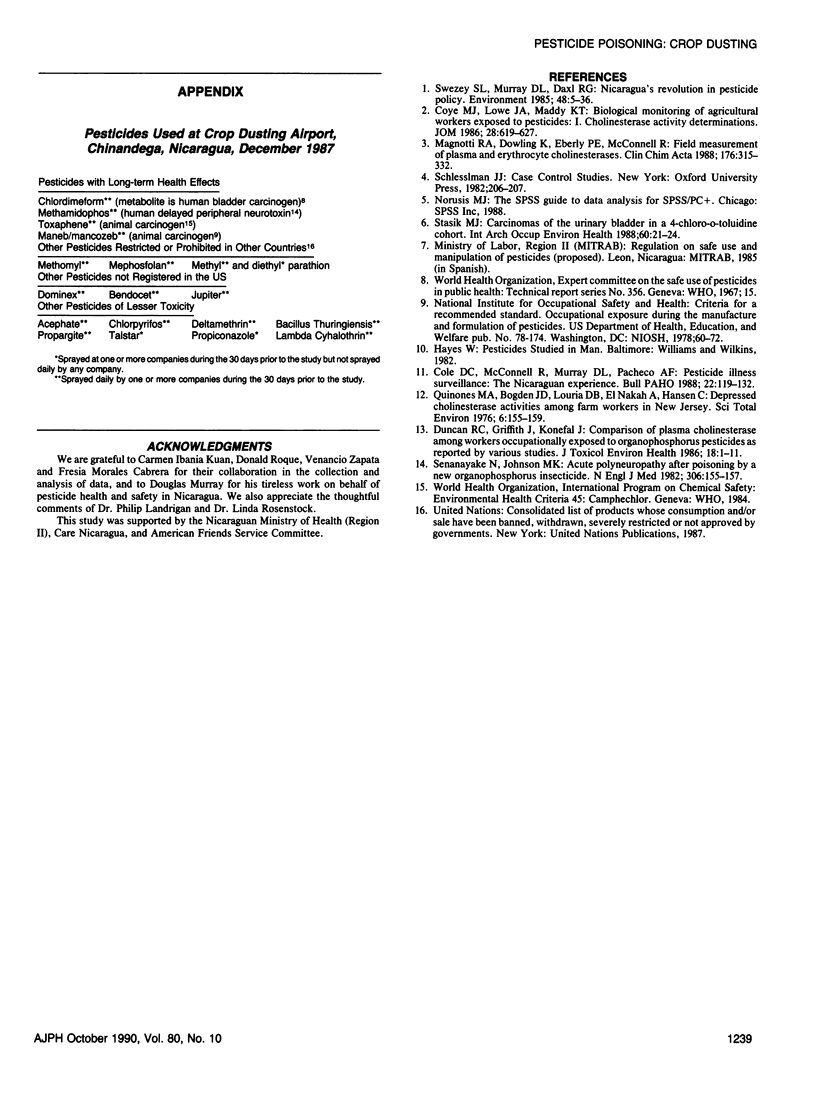Abstract
A cross-sectional medical survey was conducted among 63 Nicaraguan aviation mechanics exposed to organophosphate and other toxic pesticides. Thirty-one (49 percent) reported having been acutely poisoned on the job. Also, seven of 14 novice mechanics, with less than one year on the job, reported that they had been poisoned. Thirty-eight (61 percent) had cholinesterase levels below the lower limit of normal, including three workers with levels less than 20 percent of the lower limit of normal. Risk factors for low cholinesterase included recent hire and recent poisoning. Workers did not use protective equipment, nor were there facilities for bathing on site. As a result of this survey, the government has prohibited the mixing and loading of pesticides at this airport and requires the washing of planes prior to maintenance work; coveralls and thin, pesticide impermeable gloves are to be issued to mechanics handling pesticide-contaminated parts. Closed system mixing and loading systems have been installed at satellite airstrips.
Full text
PDF



Selected References
These references are in PubMed. This may not be the complete list of references from this article.
- Cole D. C., McConnell R., Murray D. L., Pacheco Antón F. Pesticide illness surveillance: the Nicaraguan experience. Bull Pan Am Health Organ. 1988;22(2):119–132. [PubMed] [Google Scholar]
- Coye M. J., Lowe J. A., Maddy K. T. Biological monitoring of agricultural workers exposed to pesticides: I. Cholinesterase activity determinations. J Occup Med. 1986 Aug;28(8):619–627. doi: 10.1097/00043764-198608000-00018. [DOI] [PubMed] [Google Scholar]
- Duncan R. C., Griffith J., Konefal J. Comparison of plasma cholinesterase depression among workers occupationally exposed to organophosphorus pesticides as reported by various studies. J Toxicol Environ Health. 1986;18(1):1–11. doi: 10.1080/15287398609530843. [DOI] [PubMed] [Google Scholar]
- Magnotti R. A., Jr, Dowling K., Eberly J. P., McConnell R. S. Field measurement of plasma and erythrocyte cholinesterases. Clin Chim Acta. 1988 Sep 15;176(3):315–332. doi: 10.1016/0009-8981(88)90190-8. [DOI] [PubMed] [Google Scholar]
- Quinones M. A., Bogden J. D., Louria D. B., Nakah A. E., Hansen C. Depressed cholinesterase activities among farm workers in New Jersey. Sci Total Environ. 1976 Sep;6(2):155–159. doi: 10.1016/0048-9697(76)90010-3. [DOI] [PubMed] [Google Scholar]
- Senanayake N., Johnson M. K. Acute polyneuropathy after poisoning by a new organophosphate insecticide. N Engl J Med. 1982 Jan 21;306(3):155–157. doi: 10.1056/NEJM198201213060306. [DOI] [PubMed] [Google Scholar]
- Stasik M. J. Carcinomas of the urinary bladder in a 4-chloro-o-toluidine cohort. Int Arch Occup Environ Health. 1988;60(1):21–24. doi: 10.1007/BF00409374. [DOI] [PubMed] [Google Scholar]


